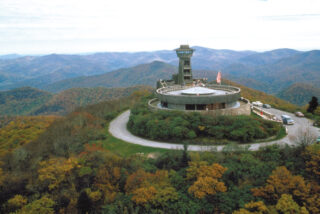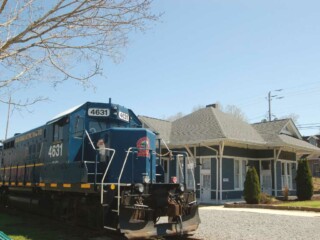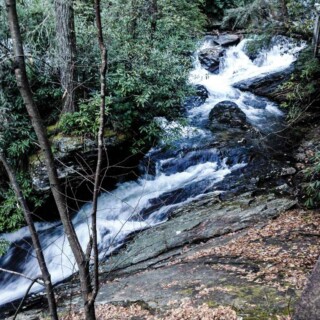Community Spotlight: Hiawassee & Young Harris
Summer Fun Nestled in the picturesque North Georgia mountains, the towns of Hiawassee and Young Harris offer a perfect summer escape for those seeking outdoor adventures, breathtaking scenery, and a tranquil lakeside atmosphere. From hiking trails, water sports, vineyards, and entertainment, there’s something for everyone in this charming region. Whether you’ve come for a weekend or want to stay longer, everyone is greeted with small town friendliness in the Enchanted Valley. With natural beauty surrounding the towns of Hiawassee and Young Harris locals are always ready to share their knowledge of the best hiking, fishing, and magnificent views from the highest mountain tops. Surrounded by 50,000 acres of Chattahoochee National Forest, outdoor enthusiasts will find themselves with choices of hiking trails offering varying levels of difficulty. Head to Brasstown Bald, the highest peak in Georgia, for panoramic views of four states from the observation deck. The Brasstown Bald Visitors center, with museum is Located on Hwy. 180 and has a paved trail to the top or shuttle available. For more views, take a drive up to Bell Mountain or more rugged road to High Shoal Falls. For a more leisurely stroll, explore Cupid Falls by Young Harris College, where a cascading waterfall awaits at the end of the path. For hikers the famous Appalachian Trail crosses Unicoi Mountain at Hwy. 17 /76 west of town. This trail draws hikers nationwide to see nature at it’s finest. Also known by many is that Towns County has another 7,000 acres of waterfront owned by the Tennessee Valley Authority (TVA), which built Lake Chatuge in 1941. Lake Chatuge’s many activities can be found at public parks, picnic areas and beaches. A variety of swimming, fishing, boating, kayaking, & canoeing awaits. Rent a pontoon boat and cruise along the serene waters, or try your hand at fishing for bass, trout, and catfish. For adrenaline junkies, jet skiing and wakeboarding offer thrills against the backdrop of majestic mountains. Many accommodations can also guide visitors to outdoor time at one of the many golf courses, horseback riding stables or white water rafting adventures. For many years, Hiawassee is known to be the home of the Georgia Mountain Fairgrounds that host numerous events throughout the year with Live Concerts, Shows at Anderson Music Hall, Pioneer Village & Local Craft Events. Treat the kids to a day of fun at the Georgia Mountain Fair in August, where they can enjoy carnival rides, petting zoos, and interactive exhibits. The nearby Hamilton Rhododendron Gardens are also open year round with more than 3,000 plants surrounding the shoreline of Lake Chatuge. Enjoy summer evenings in the city of Hiawassee on the Square including First Friday Markets with live music, food, & games held the first weekend of the month May - October. Saturdays also offer Music on the Square for visitors to bring a lawn chair and listen to a variety of country, bluegrass, and easy listening for your enjoyment Memorial Day - Labor Day Weekend. Star Gazers will appreciate Rollins [...]



